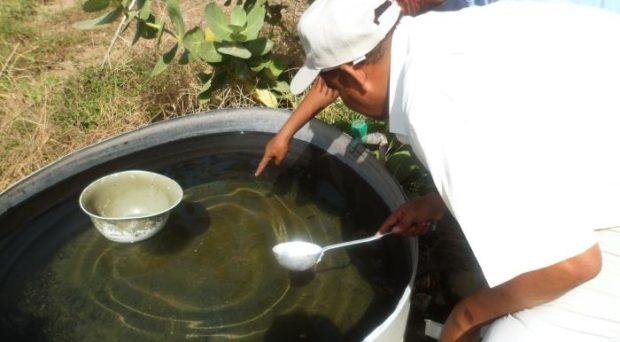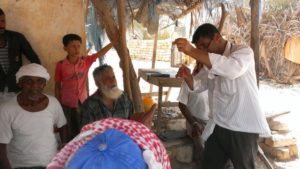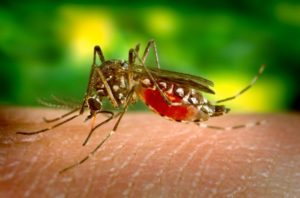
A much-cited case was reported of 2 patients in Singapore who presented with dengue symptoms and false-positive results from rapid serological testing but were later confirmed to have SARS-CoV-2. Failing to consider COVID-19 because of a positive dengue test has serious implications for both the individual patient and also for public health. It is important to recognise false-positive dengue serology results in patients with COVID-19. The unfortunate similarity of symptoms indicates patients should be explored for both infections. Clinical and epidemiological criteria have been shown to be insufficient and this reinforces the need for laboratory confirmation.
There is also the strong possibility of coinfection by both viruses – it is important that vigilance is maintained since co-infections with different pathogens may have unpredictable consequences on severity. Manifestations of this double burden of infection are seen in countries such as Ecuador, and Peru, where an enormous dengue season coincided with the spread of SARS-CoV-2, and extreme excess mortality which cannot be attributed only to COVID-19.

The incidence of dengue in South America tends to increase at the beginning of the year due to the rainy season and high temperatures and peaks in March or April. The emergence of COVID-19 and dengue co-infection warrants further investigations at country level to understand the potential of COVID-19 and dengue outbreaks in upcoming post-monsoon months in South Asia with elevated dengue infections. The rainy and post rainy periods between July and October in India report the bulk of seasonal infections such as dengue, scrub typhus, malaria and other tropical fevers. When treated, severe dengue has a mortality rate of 2%-5%, but left untreated, the mortality rate is as high as 20%. This temporal pattern means that the COVID-19 epidemic started shortly before dengue reached its seasonal peak thus resulting in simultaneous outbreaks of the two conditions.
Pakistan, as an example, is a country wherein dengue is endemic with repeated outbreaks in the last 30 years, but is also among the countries struggling to contain the COVID-19 outbreak. In their study, Arbab Saddique and colleagues report all COVID-19 only patients recovered, however the 60% of patients co-infected with dengue could not survive and died in hospital. Furthermore, two patients from Bangladesh were coinfected with both COVID-19 and dengue and one of them died hence, it can be speculated that coinfection cases may be increased in the upcoming days as peak dengue season arises in Bangladesh. High mortality rate in cases of co-infection will lead to adverse consequences in dengue-endemic countries.
From January 1st to May 16th, 2020, a total of 52,679 cases of dengue and 14,943 cases of COVID‐19 were confirmed in Colombia. As both conditions may potentially lead to fatal outcomes, especially in patients with chronic co‐morbidities, co‐occurrence and overlapping infections may increase the number of patients requiring intensive care and mechanical ventilation. Misdiagnosis of COVID-19 as dengue with failure to isolate such patients will trigger outbreaks in healthcare settings and beyond. Failing to recognize dengue and treat with hydration may also lead to preventable dengue-related deaths. In Peru, measures have been implemented in order to achieve the mitigation of the impact of COVID-19 and dengue such as the issuing of special decrees.

Population movements and frequency of interactions are key drivers of epidemics – it has been proven that social distancing reduces transmission at population level, and there is a proven link between travel and dengue epidemics. Measures of social distance and reduced mobility adopted after the first COVID-19 cases may have altered the patterns of dispersion of the dengue virus in the State of Sao Paulo, Brazil. It is necessary to carry out further research considering urban mobility data and model the frequency of dengue cases during and after the COVID-19 epidemic.
Although public health attention and funding is currently diverted to the COVID-19 response, it is of utmost importance to maintain and enhance vector control measures. For countries where governments have introduced lockdowns, special permissions should be sought to continue vector control programmes. Vector control teams targeting mosquito breeding sites should comply with social distancing measures and wear personal protective equipment (PPE) if entering houses and could even combine this activity with active case detection for COVID-19.
At a time of lockdowns with people being advised to remain at home, the recommendation is that community participation in mosquito control activities should be enhanced. Dengue transmission within the home environment is stated to be a driving factor for dengue outbreaks. Precautions must be taken not to fumigate drinking water storage tanks. Vulnerable members within households such as the elderly, pregnant women, infants, and those with underlying medical conditions should be encouraged to use insect repellents. New innovations should be encouraged such as the combination of hand sanitizers for COVID-19 with insect repellents against arboviral diseases vectors. Furthermore it is important to maintain vector control measures at buildings, such as schools, even whilst abandoned during closures to keep breeding sites at bay to prevent dengue outbreaks when people return after the lockdown.

Improved public awareness of strategies to eliminate mosquito breeding sites, wash hands, wear masks and continue practicing social distancing, should lead to efficient clinical management and alleviate mortality rates. Since primary care is known to be the preferred point of access to care for persons with suspicion of dengue and COVID-19, primary healthcare is an essential component of the health system and should be strengthened and prepared for timely treatment and adequate clinical management.
In developing countries like Pakistan, thousands of people have stopped visiting hospitals or physicians for several weeks and even the outpatient department in hospitals is not properly working due to the COVID‐19 pandemic. In such a scenario, if dengue infection in the coming monsoons reaches the previous year’s level, a more alarming health crisis could be triggered.
Developing countries are at the verge of socioeconomic collapse because there is a lack of specific amounts of diagnostic testing kits which may result in difficulty in early detection of the virus and eventually in preventing the onward transmission. Second, due to underfunding and under staffing, there is also inadequate public health care infrastructure. In summary, a resurgence of dengue and other arboviral diseases is a real threat during the COVID-19 pandemic because they add to overwhelming already fragile healthcare systems.

Comments